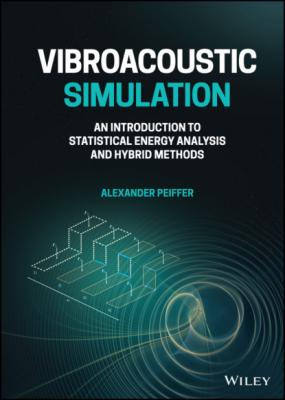Vibroacoustic Simulation. Alexander Peiffer
Чтение книги онлайн.
Читать онлайн книгу Vibroacoustic Simulation - Alexander Peiffer страница 34
 left-parenthesis StartFraction partial-differential upper P Over partial-differential rho EndFraction right-parenthesis"/> (2.17)
left-parenthesis StartFraction partial-differential upper P Over partial-differential rho EndFraction right-parenthesis"/> (2.17)
Due to (2.15) and (2.16) the relationship between the bulk modulus K and c0 is:
The bulk modulus can be defined for gases too, but we must distinguish between isothermal or adiabatic processes.
2.2.4 Linearized Equations
Equations (2.3) and (2.8) can be linearized if small changes around a certain equilibrium are considered:
Inserting (2.22) into the equation of continuity (2.3), neglecting all second order terms as far as source terms, and setting1 v0=0 the linear equation of continuity is:
Doing the same for the equation of motion (2.8) leads to:
Using the curl(∇×) of this equation it can be shown that the acoustic velocity v′ can be expressed using a so-called velocity potential which will be useful for the calculation of some wave propagation phenomena.
2.2.5 Acoustic Wave Equation
From the following operation
follows
With the equation of state (2.15) for the density we get the linear wave equation for the acoustic pressure p
Inserting the velocity v′=∇Φ derived from the potential Φ into the linear equation of motion (2.24) provides the required relation between pressure and the velocity potential
Thus, the relationship between pressure p and the velocity potential Φ is
Entering this into the wave equation (2.27) and eliminating one time derivative gives:
The definition of the velocity potential (2.25) and equation (2.29) can be applied for the derivation of a relationship between acoustic velocity and pressure:
2.3 Solutions of the Wave Equation
In acoustics we stay in most cases in the linear domain, so we change the notations from equations (2.20)–(2.22):
Equations (2.27) and (2.30) define the mathematical law for the propagation of waves. For the explanation